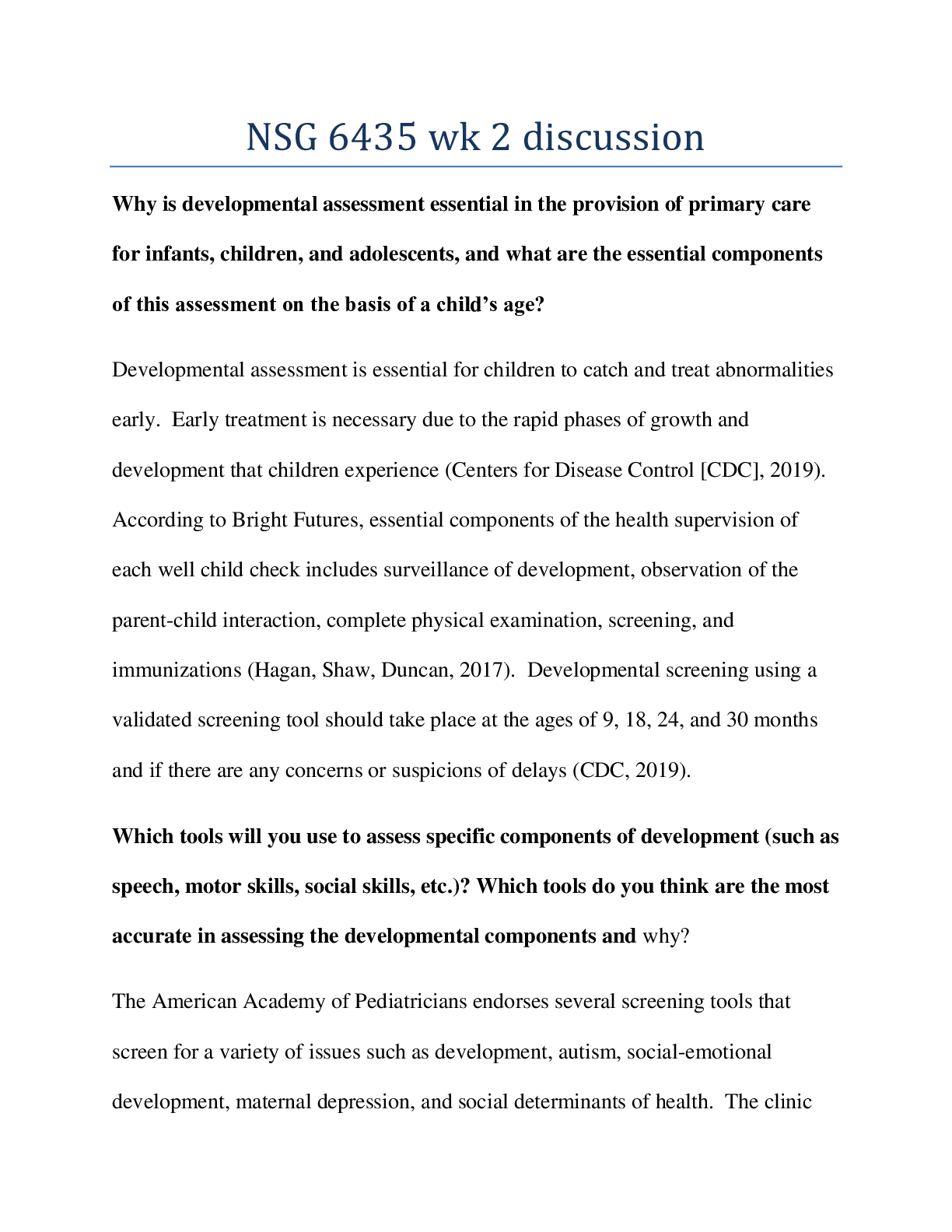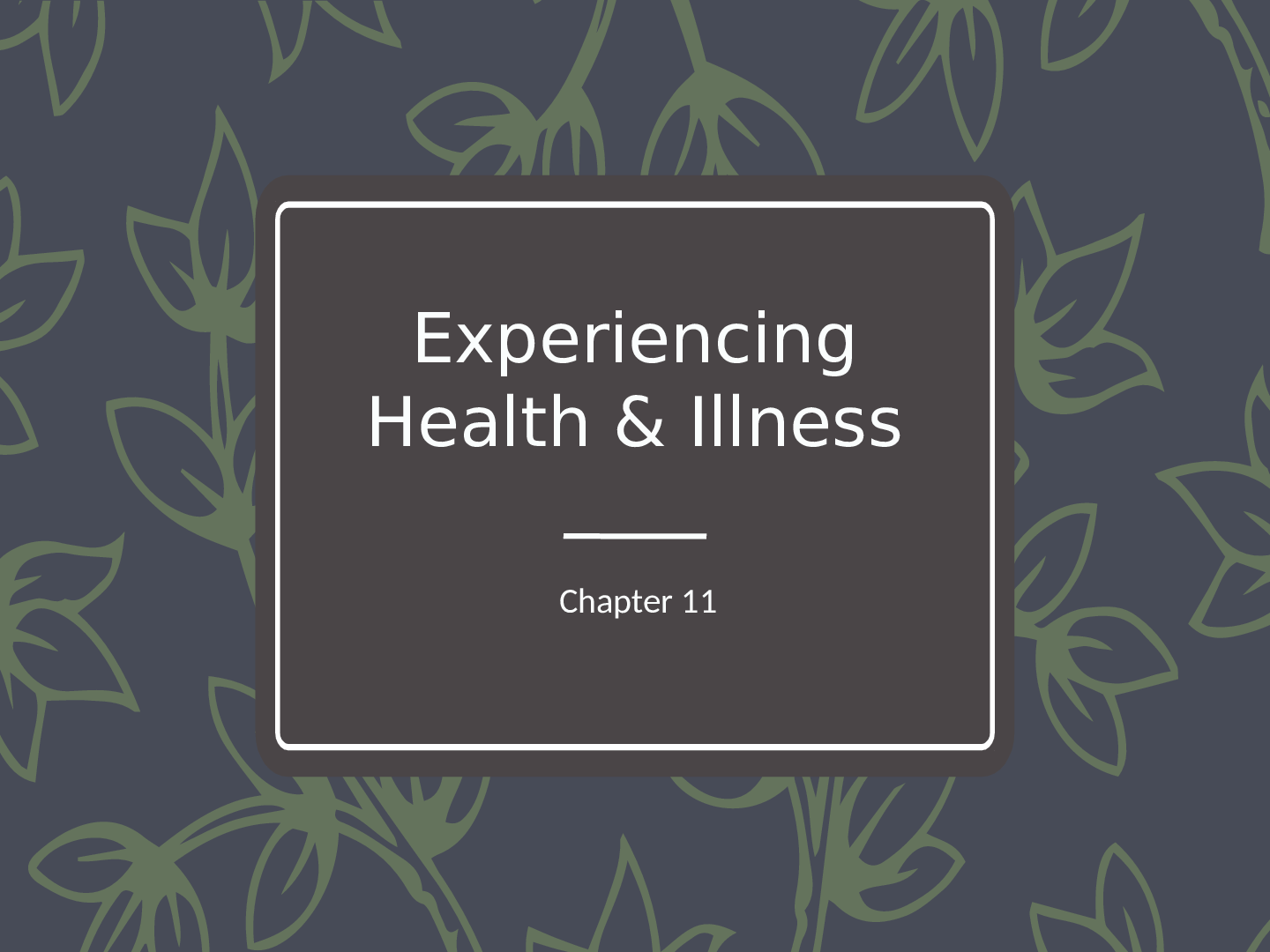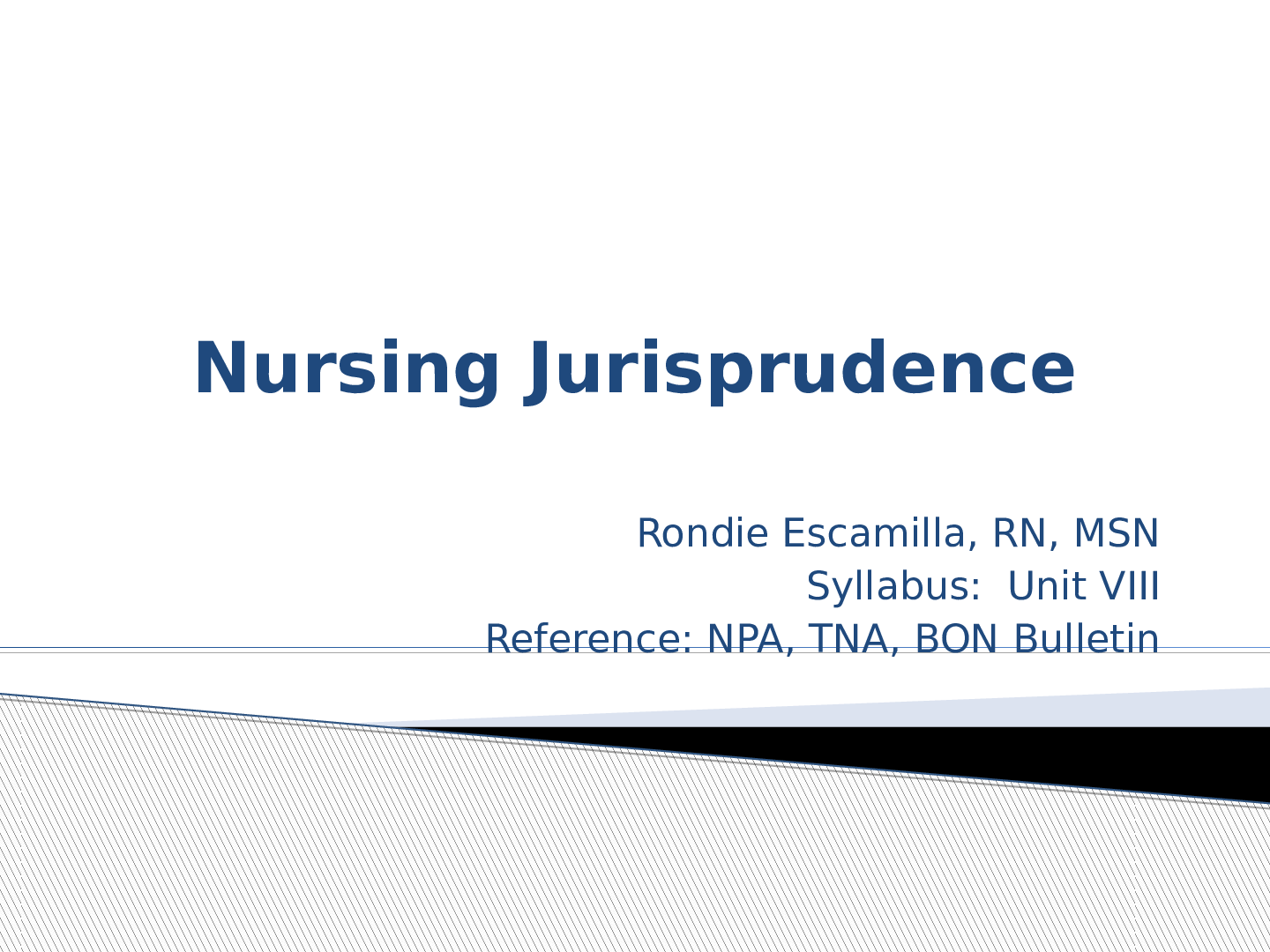Health Care > QUESTIONS & ANSWERS > SOCIOLOGY 3053 Health & Illness Quizzes: 20 Q&A (All)
SOCIOLOGY 3053 Health & Illness Quizzes: 20 Q&A
Document Content and Description Below
• Question 1 The World Health Organization defines health as: A state of complete physical, mental, and social well-being Normality. The absence of disease. Ability to function. A s... tate of complete physical, mental, and social well-being All of the above. • Question 2 The Hippocratic Oath requires the physician to swear that he or she will: None of the above. Help the sick. Refrain from intentional wrongdoing or harm. Keep confidential all matters pertaining to the doctorÐpatient relationship. All of the above. None of the above. • Question 3 The germ theory of disease is a perspective which asserts: Diseases are caused by a biological agent. Diseases are caused by a biological agent. Medicine is the only true way to treat disease. Illness can be caused by lifestyle choices. Germs are conscious agents that intentionally harm their hosts. None of the above. • Question 4 There are two categories of bioterrorism: Overt and covert. Overt and covert. Latent and manifest. Balanced and skewed. International and domestic. Medical and behavioral. • Question 5 Unlike law, religion, politics, economics, and other social institutions, medicine was ignored by sociologyÕs founders in the late nineteenth century because it did not appear to shape the structure and nature of society. Tru e Tru e False • Question 6 Which is NOT a major area of investigation in medical sociology? All of the above answers are major areas of investigation in medical sociology. Social facets of health and disease. Social behavior of health care personnel and their patients. Social functions of health organizations and institutions. The relationship of health care delivery systems to other systems. All of the above answers are major areas of investigation in medical sociology. • Question 7 What caused the prevalence of STDs to soar around the globe? All of the above. The birth control pill. A worldwide ideology of sexual liberation and permissiveness. A new pattern of employment in developing nations. Greater availability of multiple sexual partners. All of the above. • Question 8 What is NOT a task of a sociologist in medicine? Develop theory that assists in understanding social issues related to health. Analyze the social etiology or causes of health disorders Study the differences in social attitudes as they relate to health Understand the way in which the incidence and prevalence of a specific health disorder is related to social variables. Develop theory that assists in understanding social issues related to health. All of these are tasks of a sociologist in medicine. • Question 9 The development of institutional review boards and the Health Insurance Portability and Accountability Act have eliminated ethical concerns about issues such as clinical care, informed consent, and drug testing. Fals e True Fals e • Question 10 Drug companies are typically non-profit agencies and do not benefit when academics publish articles about the effectiveness of their drugs. Fals e True Fals e • Question 1 0 out of 0.5 points Which term describes an individual’s most important position in society and typically comes from one’s occupation? Primary status. Default status. Ordinary status. Master status. Primary status. Main status. • Question 2 0.5 out of 0.5 points Many sociologists working in the field of medicine are epidemiologists. 1.*A. TRUE B. FALSE 2.32. Present-day epidemiologists primarily study epidemic diseases and give little attention to other diseases such as chronic ailments or unhealthy behaviors. FALSE 3.33. Prevalence rates, when expressed as point prevalence, period prevalence, or lifetime prevalence, vary based on the disease being measured. A. TRUE *B. FALSE 4.34. The simplest ratio computed by the epidemiologist is called the <ITAL>crude rate. *A. TRUE B. FALSE 5.35. Crude death and birth rates are too gross a measure to be meaningful for most sociological purposes *A. TRUE B. FALSE TRUE FALSE 3.33. Prevalence rates, when expressed as point prevalence, period prevalence, or lifetime prevalence, vary based on the disease being measured. A. TRUE *B. FALSE 4.34. The simplest ratio computed by the epidemiologist is called the <ITAL>crude rate. *A. TRUE B. FALSE 5.35. Crude death and birth rates are too gross a measure to be meaningful for most sociological purposes *A. TRUE B. FALSE • Question 3 0.5 out of 0.5 points What is the leading cause of death in the United States, accounting for more than onethird of all deaths? Heart disease. Diabetes. HIV/AIDS. Stroke. Heart disease. Cancer. • Question 4 0.5 out of 0.5 points AIDS now affects _____________ in Africa more than ________________. Women, men. Whites, natives. Children, adults. Homosexuals, heterosexuals. Men, women. Women, men. • Question 5 0.5 out of 0.5 points The primary focus of the epidemiologist is on: Health problems of social aggregates. Catastrophic disease outbreaks. Societal demographics. Health and wellness of children. Individual’s diseases. Health problems of social aggregates. • Question 6 0.5 out of 0.5 points The science of epidemiology has passed through three eras and is entering a fourth. In what order did it pass through the first three eras? Sanitary, Infectious, Chronic. Sanitary, Infectious, Chronic. Sanitary, Chronic, Infectious. Chronic, Sanitary, Infectious. Chronic, Infectious, Sanitary. Infectious, Sanitary, Chronic. • Question 7 0.5 out of 0.5 points Which of the following plays a particularly important role in the transmission of AIDS in Sub-Saharan Africa? Migrant labor force. Government. Health delivery system. Migrant labor force. Homosexuals. Drug users. • Question 8 0.5 out of 0.5 points What is NOT a factor in the increasing emergence of epidemics? Increase in public sanitation. Increase in international transportation channels. Migration from rural areas into urban cities. Increase in public sanitation. All of the above. None of the above. • Question 9 0.5 out of 0.5 points Developing nations are typically characterized by a high birth rate and a high death rate, with a relatively young population. Tru e Tru e False • Question 10 0.5 out of 0.5 points The bubonic plague was ended in 1750 with the development of penicillin. Fals e True Fals e • Question 11 0.5 out of 0.5 points The social environment, referring not only to living conditions but also norms and values, can cause sickness. Tru e Tru e False • Question 12 0.5 out of 0.5 points Since 2000, the number of AIDS cases has sharply increased in what region of the U.S.? South. Northwes t. West. Midwest. Northeas t. South. • Question 13 0.5 out of 0.5 points _______________ activity by Latin American men is believed to be important in the infection of a large proportion of females. Bisexual. Bisexual. Heterosexual. Intravenous drug use. Homosexual. Illegal. • Question 14 0.5 out of 0.5 points The lowest AIDS mortality rates for American males are found in: Asians. Native Americans. Non-Hispanic whites. Hispanics. Non-Hispanic African Americans. Asians. • Question 15 0.5 out of 0.5 points ___________ appears to be a major channel for AIDS transmission in India. Prostitution. Marijuana use. Mother to child transmission. Prostitution. Improper sanitation. Overcrowding. • Question 16 0.5 out of 0.5 points At the end of 2007, the majority of AIDS cases in the U.S. were found in: Homosexual and bisexual men. Homosexual and bisexual men. Homosexual and bisexual women. Intravenous drug users. Blood transfusion patients. Children of a parent with AIDS. • Question 17 0.5 out of 0.5 points A scientist who studies the origin and distribution of all types of diseases is best described as a(n): Epidemiologi st. Biochemist. Social worker. Epidemiologi st. Demographe r. Sociologist. • Question 18 0.5 out of 0.5 points What a person does, who a person is, and where a person lives can specify what health hazards are most likely to exist in that individual’s life. Tru e Tru e False • Question 19 0.5 out of 0.5 points Much of the fear about AIDS arises from the fact that many people who carry the virus are not aware of it. Tru e Tru e False • Question 20 Total number of cases times total population. 0.5 out of 0.5 points Total number of cases times incidence. [Show More]
Last updated: 1 year ago
Preview 1 out of 12 pages
.png)
Reviews( 0 )
Document information
Connected school, study & course
About the document
Uploaded On
Jul 31, 2022
Number of pages
12
Written in
Additional information
This document has been written for:
Uploaded
Jul 31, 2022
Downloads
0
Views
36













.png)




















